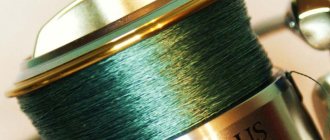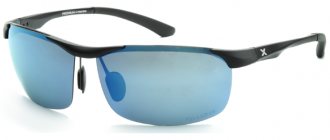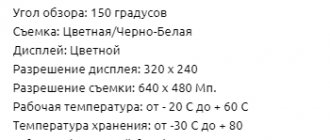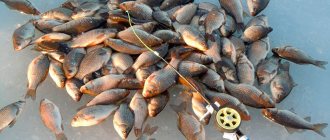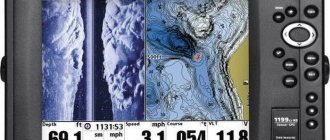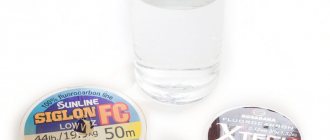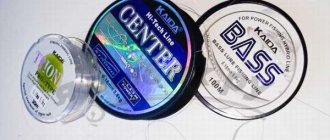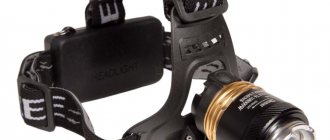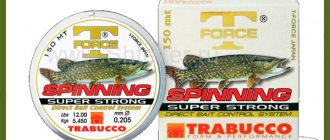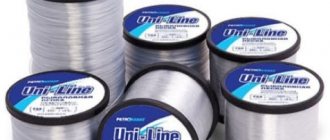Buy quality products at affordable prices in the best fishing online stores
. Give gifts to yourself and your loved ones!
we are in social networks
— subscribe to us on Facebook, Youtube, VKontakte and Instagram. Stay up to date with the latest site news.
Line is the key element of any fishing tackle. It connects all the elements of the equipment into one whole and can withstand heavy loads when casting and retrieving fish. Bite signals are transmitted along the line to the float or to the rod tip. The physical connection between the fisherman and the fish is provided primarily by the fishing line.
The fishing line must withstand the stated loads, be inconspicuous in the water, not tangle or deform, have the same diameter along the entire length, and be resistant to abrasion and other mechanical influences.
Types and types of fishing lines
All fishing lines are divided into three main types:
- Monofilament
- Fluorocarbon
- Wicker
In this article we will consider the first two types. Braided fishing lines should be discussed separately, since they have a completely different structure and characteristics.
Monofilament fishing lines have different properties. Some are tougher, while others are softer. Rigid fishing lines are not prone to deformation. They do not curl into spirals and remain smooth for a long time. Stiffer lines transmit bites better when fishing with donks and feeders over long distances. However, their safety margin is usually lower than that of softer models.
Rigid fishing lines hold knots worse. Therefore, more skill and diligence are required from the fisherman when installing equipment.
Soft fishing lines have a high elongation coefficient. Soft lines hold knots well, even if the fisherman has not formed them very well. They absorb fish jerks well and have high strength. However, when fishing at long distances with donks and feeders, they do not convey sluggish fish bites so well. This is especially noticeable in early spring and late autumn. There may be bites, but you simply don’t see them even on a soft feeder tip. This is directly related to the stretchability of the line.
There are sinking and floating lines. Sinking ones are most often used in bottom rigs, and floating ones are used in spinning rods, sometimes in Bolognese and match fishing rods. There are also slow-sinking and fast-sinking models. If you fish at great depths with donks and feeders, then use fast-sinking lines. If you need to slow down the process of immersing the equipment, then use a slow-sinking fishing line.
Fluorocarbon fishing lines have a slightly different structure. They are more rigid and practically invisible in water. Most often they are used as a leader material. They don’t spin as much and remain level throughout the entire fishing trip. Fluorocarbon lines are better suited for fishing on rocky and shell bottoms. They don't fray as much as softer models.
These fishing lines are used by fans of bottom and spinning fishing when fishing at long distances. They transmit bites well because they have minimal stretch.
Kinds
Monofilament
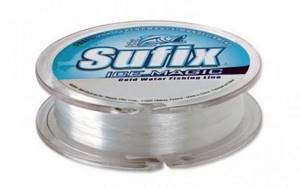
The following polyamide materials are used for the manufacture of modern fishing lines:
- Nylon. This material was invented by the American company DuPont in 1937. Monofilament line is transparent but still visible in water because its refractive index is 1.52 compared to water's 1.3.
- Capron. Nylon is similar in properties to nylon, as it was developed to produce a material that has similar characteristics, but would not interfere with the production of nylon. The credit for the invention of nylon goes to the German company IG Farben, which presented its products in 1952.
Advantages:
- accessibility and low cost;
- quite high strength;
- perfectly round cross-section;
- abrasion resistance;
- absolute indispensability in certain types of fishing (float, winter fishing);
- relative invisibility in water.
Flaws:
- extensibility;
- strength is lower than that of braided cord;
- fragility;
- exposure to external factors: temperature; ultraviolet radiation;
- presence of memory.
Monofilament fishing line is used in float fishing, winter fishing, and in some cases when fishing with a feeder and spinning rod.
Wicker
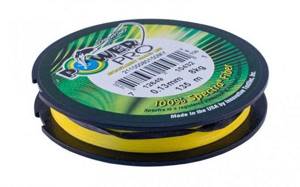
Braided lines were originally made from Dacron . It is now used as backing material in fly fishing. Dacron was replaced by Kevlar.
Modern braided lines are made from high modulus polyethylene . The material was invented in Holland and was called Dyneema. In the USA it is produced under license and is called Spectra. In Japan, this is done by Toyobo. Individual braided cords differ from each other in the number of fibers, weaving and impregnation methods. 3, 4 and 8-core cords are available. The latter have the most dense weaving, smoothness and with their help you can cast longer, but if damaged they are destroyed faster.
Advantages:
- low extensibility;
- lack of memory;
- high strength with small diameter;
- durability;
- resistance to external factors.
Flaws:
- high price;
- low abrasive resistance;
- visibility in water;
- the ability to absorb water and accumulate particles suspended in water;
- fast fading;
- the impossibility of achieving a circular cross-section and the relativity of diameter values;
- tendency to freeze when fishing at sub-zero temperatures;
- softness, making it very difficult to untangle beards.
Braided fishing line is indispensable for some types of spinning fishing (jigging, fishing with spaced rigs, twitching). Cords are also used when fishing with a feeder.
Fluorocarbon
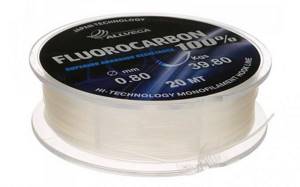
Fluorocarbon was invented in 1971 in Japan. In our country, this material is called “fluoroplastic”.
Advantages:
- high wear resistance;
- resistance to any negative factors;
- the elongation is somewhat lower than that of braid, but higher compared to monofilament;
- rigidity;
- lack of memory;
- negative buoyancy;
- stealth in the water. Refractive index 1.42.
Flaws:
- high price;
- strength is less than that of monofilament fishing line;
- low knot strength.
Fluorocarbon is used as a leader material in spinning and feeder fishing, sometimes as the main line when fishing with a float and spinning rod, as well as in ice fishing.
A comparison of the properties of individual types of fishing line is given in Table 1.
Table 1 - Comparative characteristics of various types of fishing line
| Type of fishing line | Extensibility | Durability | Ability to absorb water | Resistance to external factors | Wear resistance |
| Monofilament | High | Low | Average | Low | Average |
| Wicker | Low | High | High | High | Low |
| Fluorocarbon | Average | High | Low | High | High |
How to choose the right fishing line
When buying fishing line, you need to pay attention not only to the values indicated on the box. First, you should carefully consider the coating of the fishing line. If it is shiny, then the line can be considered fresh. If the coating is cloudy, then this product is not the first freshness. It is better not to buy it, since such a fishing line most likely has microcracks and has lost its original properties.
Another important parameter is the availability of memory. The fishing line wound on a reel comes off in spirals. If you hold the fishing line with your fingers and move them a certain distance, the fishing line should align. In this case, we can say that the fishing line has almost no memory. When fishing, after several casts it will lie flat on the bottom, and not curl in spirals.
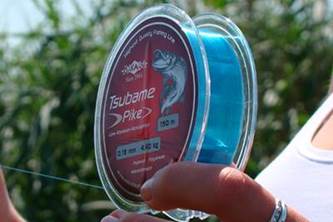
Some anglers use a micrometer when purchasing fishing line. With its help it is easy to check the diameter of the product at different distances. No matter where you check, the value should be the same and match the diameter indicated on the package. For example, if the box indicates a diameter of 0.12 mm, but after measurements it turns out to be 0.13 or 0.14 mm, then this is not suitable. This difference is significant for a given diameter and it is not worth taking this fishing line. It was manufactured in violation of rules and standards.
It happens that in one section the fishing line has one diameter, after a few meters it is significantly different and on the third section it is the same as on the first. Such a defect can be detected not only with a micrometer. All you have to do is take a small lead pellet and clamp it onto the fishing line. Next, we carry out the pellet for several meters. If the line has the same diameter, then the pellet will slide without stopping. To move it, you need to apply the same amount of force. If the pellet has stopped or, on the contrary, has accelerated its movement, then in this place the fishing line changes diameter.
Not all sellers may allow such a procedure. But if they do not allow you to conduct such an experiment, then you should not buy fishing line in this store.
It is also useful to check the rigidity of the fishing line. Simply unwind a few centimeters from the reel and place it on a table or other flat surface. If the fishing line is soft, then it will lie flat with its entire surface. You can also hold it in your hands and jerk in opposite directions. The soft line springs well and feels elastic, as if it were a hard rubber band. The rigid line has almost no stretch. It is harder to tie knots with it. This is especially noticeable when trying to tie a knot from a small segment.
Breaking load is a key parameter. Lead and other thin fishing lines are quite easy to check for breaking. Take a piece and simply tear it with your hands. To avoid cutting your palms and fingers, you can wear gloves. A good fishing line with a thickness of 0.1-0.12 mm will not tear under such loads. Do this check in 4-5 places and make sure that it does not tear.
If the line breaks, then it is no good. When catching larger fish, it can fail at any moment. High-quality fishing lines with a small diameter have high strength. For example, if a fishing line with a diameter of 0.12 mm has a breaking load of 1.5, then this is a good indicator.
Choosing fishing lines for different types of fishing
Different fishing lines are used for different types of fishing. When choosing a vein for a donkey or a feeder, pay attention to the strength characteristics, diameter, rigidity and resistance to abrasion. Bottom fishing usually takes place at medium and long distances. To see all the bites, it is better to use a stiffer fishing line with a cross-section of 0.2-0.25 mm. It is important that you can securely attach a swivel or carabiner to it and make a regular loop for attaching a leash. There are models that are so rigid that the knots on them turn out to be very unimportant and in these places the strength noticeably drops.
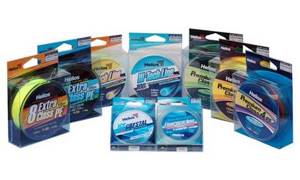
When fishing with a Bolognese fishing rod, sinking and floating fishing lines of medium hardness with a diameter of 0.16-0.2 mm are used. Usually a small reel with a spool capacity of 1000 to 2500 is placed on a lapdog. It is very important that the fishing line has memory. Otherwise, when dropping from the spool, small spirals will come out, and fishing will become ineffective.
Match fishing rods use mostly sinking lines. The boxes are usually marked "Match". Such models are designed for long casts; they are quite rigid and come off the spool well during casting.
When fishing with a spinning rod, both sinking and floating lines are used. If fishing is carried out in the bottom layer, then sinking models are used. For fishing on the surface, floating lines are more suitable.
When fishing with a fly rod, it is better to use a soft line with a cross-section of 0.1-0.16 mm. It is important that it has no memory and holds the knots well. Such models absorb the jerks of large fish well and allow.
Fishing with jigs requires very delicate equipment. The fishing line used is very thin and of the required rigidity. It is matched to the game of each jig. Each jig fisherman empirically selects the ideal forests for fishing with jigs.
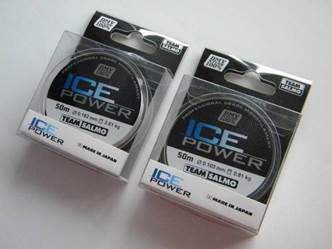
Let's talk separately about winter fishing line. It is designed for fishing from holes. This line has a more rigid coating, it is resistant to frost and with a small diameter can withstand significant loads.
What is a “braid”?
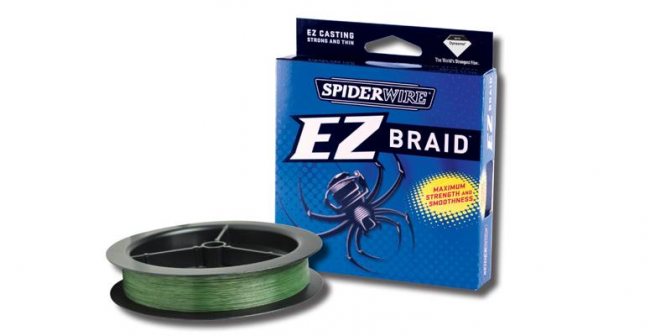
What does the number of lines on bobbins mean? When weaving a cord, 3, 4 and 8 cores can be used. A cord woven from 3 threads is called a “pigtail”, it is quite loose, it is loosely wound on the reel spool, which is why loops often arise when casting and retrieving the bait, it gets tangled easily, and the resulting “beards” can be untangled with great difficulty. The 4-core cord has a denser structure and, accordingly, does not have many of the disadvantages inherent in the 3-core cord. On spools with such a cord the number 4x is placed.
The 8-core cord has the tightest weave. It is smoother to the touch and allows for longer casting. The spools have an 8x symbol on them.
On some lines there are markings indicating in what conditions and what kind of fish it is recommended to catch with such lines. This designation of cords is typical for Japanese manufacturers. Domestic spinning anglers are no longer surprised by this marking, and they have found use for such cords in Russian fishing conditions.
The most commonly used classification is:
- Shore - shore fishing. This refers to sea fishing, but no one objects to fresh water fishing:
- Sea Bass. It assumes catching a specific fish, but in reality it means a universal line suitable for any type of spinning fishing;
- Surf/Trowc. Cords for long casts, for fishing on a sandy bottom;
- EGI. Sinking braids with increased resistance to abrasion when fishing in rocks;
- Shore Jigging. Cords that have colored markers at certain sections, with the help of which you can determine the casting distance.
- Rock Fish Game. The most abrasion resistant cords.
- Off Shore Jigging. Lines designed for vertical fishing. They also have different colors.
- Bass. Lines for fishing largemouth bass. They are quite thick, since fishing is carried out with casting gear, and the thickness of the cord when fishing with a multiplier does not in any way affect the casting distance.
- Trout. Lines for trout fishing, including:
- Area. Thin lines for catching rainbow trout on “platforms”;
- Big Trout & Salmon. Cords for catching salmon in rivers are strong, inconspicuous and elastic.
What role does the color of the fishing line play?
Manufacturers produce fishing lines in different colors. During the production process, a pigment of the desired color is added to the polymer. The result is blue, green, yellow, brown, black and other colors of products.
The color of the fishing line plays a certain role. For example, if you are fishing with a donk or feeder on a muddy bottom, then it is better to use black or brown fishing line. It will not stand out and will not confuse wary fish.
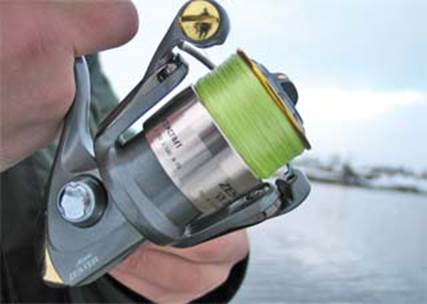
If you fish with a fishing rod in areas with underwater vegetation, it is better to use green fishing line. When fishing in the wire or in the water column, it is better to use transparent fishing lines. In general, if you unwind yellow, green or blue thin fishing line, it will not seem colored. The color will be barely noticeable. This applies to thin models. On thicker ones, the color is better visible when unwinding. Dark colors are clearly visible even on thin woods.
It should be understood that colored fishing lines have slightly lower strength due to the addition of dyes. This cannot be said to be a significant drawback. It has been noticed that low-quality color models lose strength faster than their transparent counterparts.
Fishing line companies
Gone are the days when domestic fishermen had to fish with an Otradnoe line, and getting a Klinskaya line was considered a great success. Now the choice is endless. Most fishing lines are produced in Asia, even if the packaging indicates that the fishing line is German, French or Austrian, most likely its homeland is some Asian country. Only Italy produces high-quality fishing lines for float fishing.
Japanese ones are considered the best monofilament lines. The most famous fishing lines are Shimano and Daiwa , which are specialized for different types of fishing. The competitors of Japanese braids are American ones. Among the former Sunline and Varivas , and among the latter, Power Pro and Berckley . The range of fluocarbon is currently wide, and finding the right one is not difficult.
Expert opinion
Knipovich Nikolai Mikhailovich
Zoologist, hydrobiologist. I am interested in fishing at a professional level.
Attention! An important characteristic of any fishing line is the price/quality ratio. Sometimes it’s not worth overpaying for a brand, since currently not the most well-known manufacturers produce fairly high-quality fishing line.
Resistance of fishing line to mechanical damage, temperatures and sunlight
When fishing you have to fish not only in comfortable conditions. Sometimes the main fishing is done on the bottom covered with shells or in snags. Ultraviolet rays in the summer also do not add strength to fishing lines.
Manufacturers have learned to produce fishing lines that are resistant to abrasion and aggressive ultraviolet rays. During the manufacturing process, a special top layer is created that can withstand external influences well during operation.
Sometimes you have to fish in not very clean places with a high content of alkali and other chemical liquids. For these conditions, it is better to use ordinary cheap fishing line, which is not so bad.
For fishing at sea, special fishing lines are designed that are resistant to the aggressive effects of salt water. On the packaging, manufacturers indicate that this model is intended for sea fishing.
Typically, such fishing lines have a Teflon or other similar coating.
The importance of line selection
In the old days, anglers did not have the opportunity to choose good quality fishing lines that were inconspicuous, thin, and with good characteristics. Previously, fishing line was made from simple horsehair.
Subsequently, fishing lines began to be made from materials such as linen, silk. Over time, fishing lines began to be made from homogeneous or braided nylon fibers. What kinds of fishing lines are there now?
A good fishing line should have the following characteristics: strength, thinness, inconspicuousness in water, and not susceptible to rotting.
Division of fishing lines by class: monofilament and braid. Both in the first type and in the second, there is a specialized fishing line available. For example: Winter-type monofilaments are divided into monofilament, polymer and high-polymer. Monofilaments are also divided into types, namely: nylon, nylon. When producing fishing lines, the manufacturer tries to achieve a positive result in all characteristics; for this, the fisherman needs to think in advance what results he expects from this fishing line.
